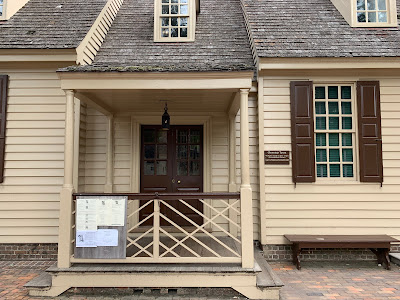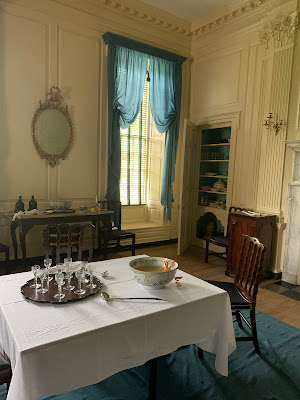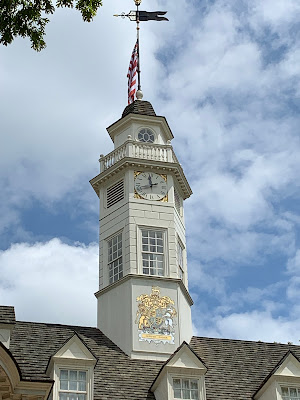It was time to go back in time to pre Revolutionary War period.
Once the capital of Virginia, Colonial Williamsburg is a living history museum, lending insights into the pinnacle of its power and influence in the region during the 1700s. For most of the 18th century, the city was the center of the most civilized life in the colony. Having undergone a massive restoration since then, Colonial Williamsburg displayed a culture which eventually made way for our present day form of government in the country.
Waiting for the next passengers
The courthouse once housed two separate court systems, one being the James City County Court, responsible for carrying out county cases, and the other the Hustings Court, responsible for the city cases. The courthouse was the site where Benjamin Waller read aloud the Declaration of Independence on July 25, 1776, after it arrived from Philadelphia. The building was also used as a hospital for the Confederate Army after the Battle of Williamsburg.
This is where the criminals ended up.
There were also trials that were held in the capital depending on your status within the community. This was the main courtroom - the accused would stand right were the guide is standing.
Meeting room
We walked around a bit to take in the sites. Need a hat?
There was an interesting re-enactment in the street depicting two enslaved people who were trying to get married before he had to leave the following day with his owner for Richmond.
This mid-eighteenth century building was the home of George Wythe, tutor and friend of Jefferson. Wythe was the first professor of law at an American college, and first Virginia signer of the Declaration of Independence. Washington used the house as his headquarters in 1781 before the siege of Yorktown. Five major outbuildings and garden plan reflect a plantation layout. Furnishings are in the manner of a well-to-do eighteenth-century Virginia household. We didn't see his gravesite in Richmond but at least we saw his house.
This original eighteenth-century building, expanded to its present site after 1751, housed one of the best known taverns in Williamsburg. It bears the name of its builder and first owner, Henry Wetherburn, who previously operated the Raleigh Tavern across the street. A distinguished clientele was attracted by the good food, and festive social life. An inventory of Wetherburn's fine furnishings guided their replacement. The tavern has been restored to its appearance of about 1760.
We meandered down to the "shopping" district to look around. Wendy had suggested the Cheese Shop for lunch so that was our first stop.
We sat and took in the sights and I noticed this friendly face watching me. Real or not?
Not but it sure looks real
A winery? Thank you, we will go in.
The next day, we went back so that we could see the Governor's Palace. The Palace was the home of the Royal Lieutenant-Governor, two Royal Governor's, and the first two Governors of the Commonwealth of Virginia, Patrick Henry and Thomas Jefferson. An act by Virginia's General Assembly in 1706 authorized the construction of a residence in Williamsburg for the Governor. The Palace, completed in 1722, was destroyed by a fire in 1781 while it was being used as a hospital for Americans wounded at the battle of Yorktown. The Palace was reconstructed on its original foundation and is furnished to represent the house of the last British Royal Governor of Virginia, John Murray, the fourth Earl of Dunmore, and his family.
The map behind him depicts how Virginians saw the country in the mid 1600s. Notice the pink of Virginia - they considered that it went all the way to California.
The entry hall was interesting - notice the weapons. The guide suggested this should be a lesson to all women to never let a man decorate.
The dining rooms were beautiful.
The form of heating was ornate and, apparently, effective.
Being that we'd just been to Red Hill and learned about Patrick Henry's death while sitting in his favorite chair, this was especially interesting. The guide stated that this was the actual chair that he was sitting in when he died. He didn't explain how it got from his estate at Red Hill to Williamsburg which is a significant distance. We didn't ask how or why it ended up in Williamsburg but perhaps they're not sure, either.
It's called a corner chair because it fits into a corner.
The guide had fun while we was teaching the ladies to curtsy.
And as we left we took a last look at the Palace.
And then it was time to leave. After so much walking first in the rain, then in the heat, we decided to take the shuttle back to our car.









































Great photos and report. What's not to love about Williamsburg? I really like the reenactors. My sister and I went one time, and while we were resting on a bench, a woman came over and started embroidering and fretting over her husband who was away fighting the British. And I was expected to carry on that kind of conversation??? Did you watch the series "Turn"? If so, you saw the Governor's Palace and other buildings around the 'Burg.
ReplyDeleteRon watched Turn but I never did. One of the reenactors found out a family next to us were from New York and he went into how long they must have traveled to get there and how he had never been outside of Williamsburg. His name was Jemmy and he took care of the master's horses. It took me a minute to figure out what was going on. Heck, I don't even know the difference between the Capitol and the Courthouse :-)
DeleteI loved Williamsburg. Nothing like "living" history.
ReplyDeleteWe went there once as children and I never forgot it.
Delete